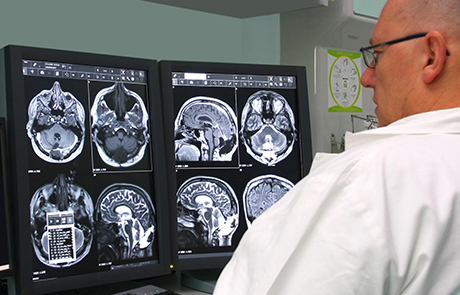Overview
What Are Headaches?

Headaches and concussions can vary greatly in intensity and side effects. Northwestern Medicine physicians are dedicated to providing individualized care and treatment for head injuries and headaches.
Headaches
A headache is defined as pain or discomfort in your head or face. Most people experience mild headaches from time to time, but headaches can also be severe, chronic and intense. There are several types of headaches:
Cluster headaches
Cluster headaches are rare and are characterized by the sudden onset of pain, restlessness, congestion, watering eyes and swelling on the forehead. They typically begin around age 30 and may be hereditary, but the exact cause is unknown.
Migraine headaches
Migraine headaches are distinguished by the fact that symptoms other than pain occur, such as lightheadedness, light sensitivity and other visual disturbances. Migraines may occur with or without an aura phase, meaning they may involve hallucinations, numbness, changes in speech or weakness. The aura phase is the second stage in the onset of a migraine, and is usually experienced by 1 in 5 migraine sufferers.
In addition to head pain, migraine sufferers can also experience nausea and vomiting. Some patients experience a change in mood, behavior or awareness before the headache, and depression, fatigue and anxiety during the headache phase.
Rebound headaches
Rebound headaches are thought to be a result of the overuse of painkillers for headaches.
Sinus headaches
When your sinuses are inflamed, they can cause pain, commonly accompanied by a fever. Sinus headaches can be treated with antibiotics, as well as antihistamines or decongestants.
Tension headaches
Tension headaches are the most common type of headache, affecting between 30 and 80 percent of the population. Tension headaches and often caused by stress or muscle tension with symptoms that include slow onset, dull pain and pain on both sides.

